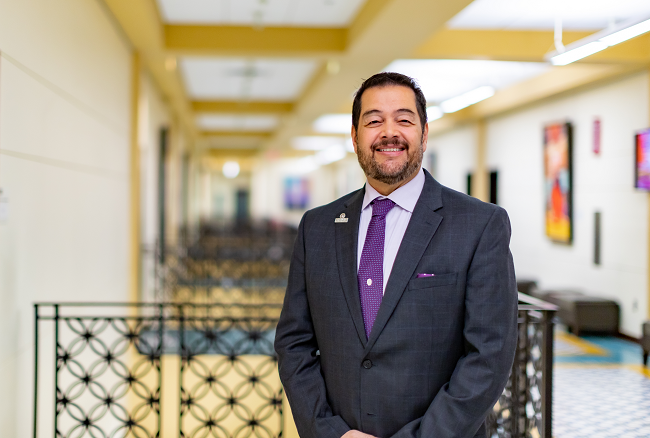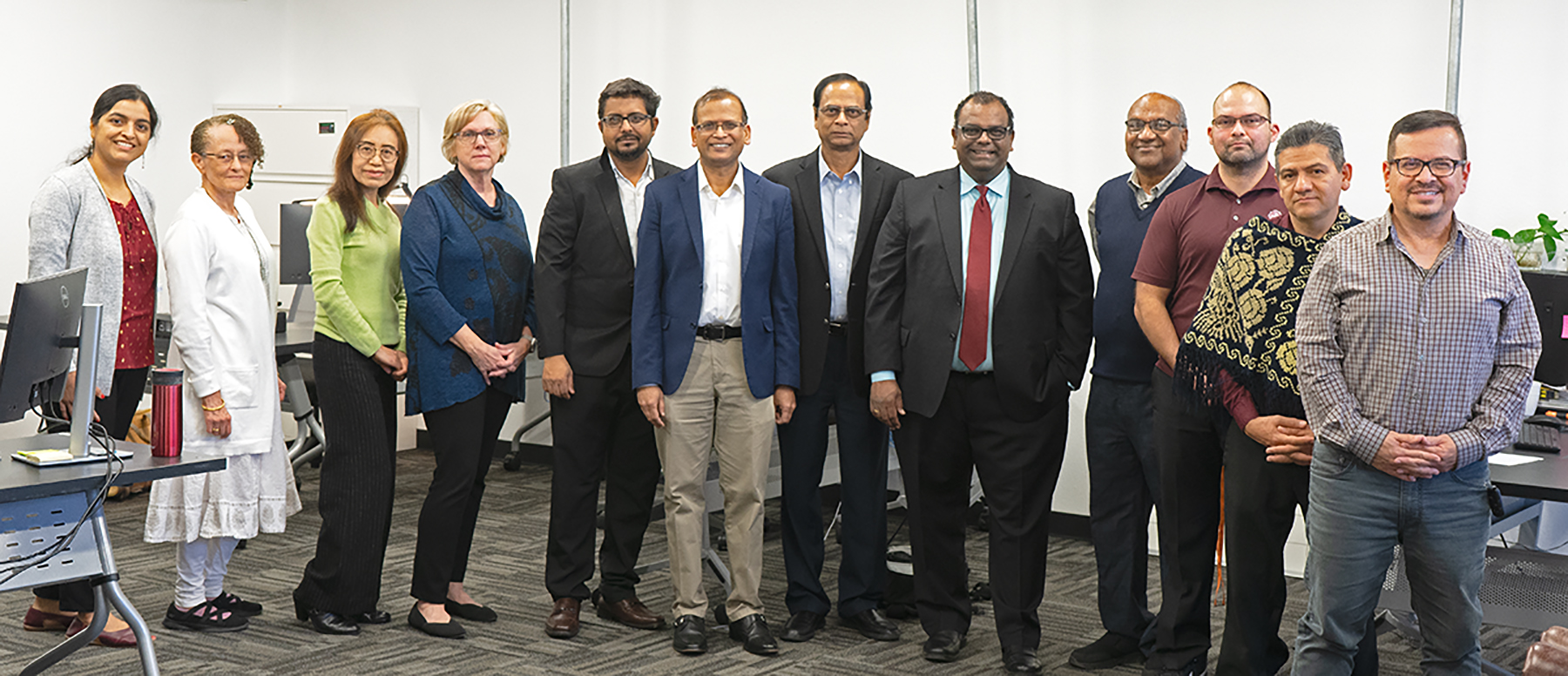College of Education and Human Development Dean Dr. Carl Sheperis identifies the virtues and challenges of telehealth.
Many are familiar with the term blended learning – a combination of in-class and online educational instruction that has gained new relevance and necessity during a global health pandemic. But, what about blended care in which virtual doctor-patient interactions at least partially supplant in-person visits?
Dr. Carl Sheperis, Dean of the College of Education and Human Development at Texas A&M University-San Antonio – who has the distinction of being the first counselor educator asked to work with the National Academies of Science, Engineering and Medicine – co-authored a recently released National Academy of Medicine (NAM) Perspectives discussion paper on the impacts and opportunities of digital health care. In their May 24, 2021, commentary Reimagining Patient-Centered Care During a Pandemic in a Digital World: A Focus on Building Trust for Healing, Dr. Sheperis and his colleagues identify the challenges for patients and providers as telehealth gains momentum.
Combatting Isolation, Conveying Empathy
Among the challenges for patients is combatting feelings of anxiety and isolation – especially acute at the height of the pandemic when even immediate family members were restricted from seeing their loved ones. Challenges for health care providers include difficulty developing trust and conveying empathy with patients due to a lack of physical touch that can prove healing for many.
And yet, among the lessons learned as a result of the care restrictions imposed by COVID-19 is that virtual care likewise introduces certain benefits to health care provision overall. Chief among them are efficiency and innovation, including greater use of technology to see and connect with patients more regularly.
The right balance between efficiency and effectiveness is crucial, suggests Dr. Sheperis. As he and his co-authors write: “Like all the challenges facing health care workers during the pandemic, care providers are learning how to show empathy and gain their patients’ trust using technology as a tool rather than an impediment to touch. Transferring these skills to students and trainees will help them navigate the new digital caring environment that is certain to remain even after the pandemic.”
More specifically, the research of Dr. Sheperis and his colleagues point to essential practices providers and providers-in-training will need to master, including ways to develop trust with patients within a health care environment that is increasingly digital in nature. These include active listening and body language and facial expressions that show providers are engaged in trying to understand patient concerns.
Acquiring a Digital Touch
Especially for care providers in training, much more can be explored in terms of best practices for reassuring and comforting patients virtually, including relaxation techniques like breathing and stretching exercises, soothing background music or use of humor. According to the paper’s authors: “Research to date has not focused on the virtual environment thereby opening opportunities for learners to participate in research activities aimed at identifying ways to digitally touch patients….Such efforts could potentially improve future online health care interactions particularly with stressed and anxious patients.”
As Dr. Sheperis concludes: “The pandemic has shown us just how important it is for us to make concerted efforts to humanize a digital connection. Health care professionals now have to make conscious decisions about how they are connecting with patients online and what they are doing to normalize the experience.”
Establishing Digital Trust
Trust is an important facet of patient care, yet little is known about how patients and physicians develop a trusting relationship in an online environment, adds Dr. Sheperis. The entire digital experience for patients (e.g., the initial phone call for service, the helpfulness of a provider’s website to offer relevant information and the actual treatment process) plays a role in the formation of patient trust.
The paper’s authors suggest there is value for patient and provider alike in employing a team approach to digital care: In their quest to “test models for humanizing physically distanced care,” providers in training could “explore digital touch points where interprofessional providers could easily share information, possibly across virtual platforms that could, for example, bring dentistry into a virtual connection with medicine, nutrition, and mental health counselors. In this way, learners and patients are integrated into the new care environment as key members of the digital care team.”
The ultimate goal of a blended care system is to replicate a caring environment within a context that embraces and takes full advantage of new technologies and innovations. “Digital trust is a new phenomenon for the health care world, and it will grow increasingly important in the years to come,” says Dr. Sheperis. “As we expand telehealth services post-pandemic, health care providers will need to pay close attention to the pathways toward facilitating digital trust.”
Click here to learn more about the digital care path forward and the implications for current and future care providers.

















